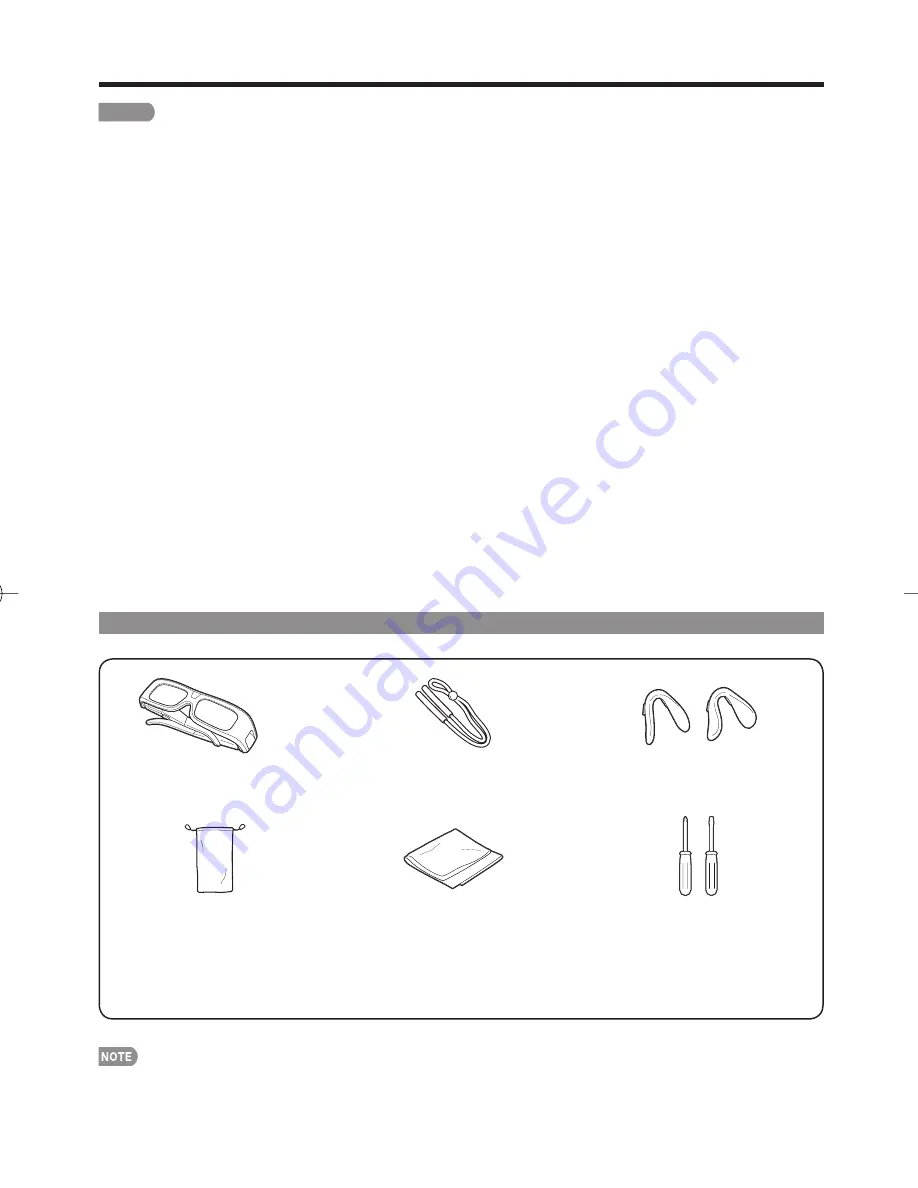
EN-3
CAUTION
•
Not all consumers can experience and enjoy 3D TV. Some people suffer from stereo blindness which prevents
them from perceiving the intended depth of 3D entertainment. Also, some people who watch 3D programming
may experience initial feelings of motion sickness as they adjust to the picture. Others may experience
headaches, eye fatigue or continued motion sickness. Like a roller coaster, the experience is not for everyone.
•
The 3D Glasses are precision equipment. Handle them with care.
•
Improper use of the 3D Glasses or failure to follow these instructions can result in eye strain.
•
If you experience dizziness, nausea, or other discomfort while viewing 3D images, immediately discontinue
use of the 3D Glasses. Using the binocular disparity 3D system of the TV with incompatible 3D broadcasts or
software can make images appear with a cross talk blur or create overlapping images.
•
When viewing 3D images continuously, be sure to take a break periodically to prevent eye strain.
•
If you are nearsighted or farsighted or have astigmatism or a different level of eyesight between the left and right
eyes, you should take the necessary steps, such as wearing eyeglasses, to correct your eyesight before viewing
3D images. The 3D Glasses can be worn over eyeglasses.
•
When viewing 3D images, keep the 3D Glasses horizontally level with the TV screen. If you tilt the 3D Glasses
with respect to the TV screen, the images viewed by the left and right eyes may appear signifi cantly different or
images may appear overlapping.
•
View 3D images at the appropriate distance from the TV screen. The recommended distance is three times the
effective height of the TV screen.
•
Be careful of your surroundings when viewing 3D images. When you view 3D images, objects may appear at
a distance closer or farther than the actual TV screen. This may cause you to misjudge the distance to the TV
screen and possibly result in injury if you accidentally hit the screen or surrounding objects.
•
The 3D Glasses are only recommended for people ages 5 and older.
•
When children are viewing 3D images, be sure a parent or guardian is present. Monitor children viewing 3D
images, and if they show signs of discomfort, immediately discontinue use of the 3D Glasses.
•
People with a known history of photosensitivity and people with heart problems or poor health should not use
the 3D Glasses. This can worsen existing health conditions.
•
Do not use the 3D Glasses for other purposes (such as general eyeglasses, sunglasses, or protective goggles).
•
Do not use the 3D function or 3D Glasses while walking or moving around. This may result in injuries due to
running into objects, tripping, and/or falling.
•
When using the 3D Glasses, take care not to accidentally strike the TV screen or other people. Viewing 3D
images may cause you to misjudge the distance to the TV screen and accidentally strike the screen, resulting in
possible injury.
Using the 3D Glasses
Supplied Accessories
Make sure the following accessories are provided with the 3D Glasses.
Nose pad *
(Large ×1, small ×1)
Cleaning cloth
(×1)
Glasses case
(×1)
3D Glasses band *
(×1)
Operation Manual
* Use the 3D Glasses band and nose pad as needed.
■
Precision screwdriver
(Phillips ×1, slotted ×1)
3D Glasses
(×1)
•
The illustrations above are for explanation purposes and may vary slightly from the actual accessories.
AN-3DG10̲E̲01.indd 3
AN-3DG10̲E̲01.indd 3
2010/07/26 17:48:44
2010/07/26 17:48:44
















